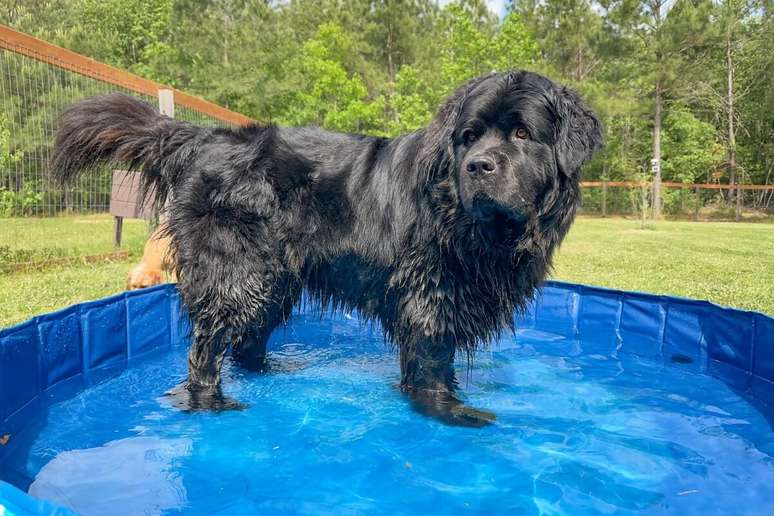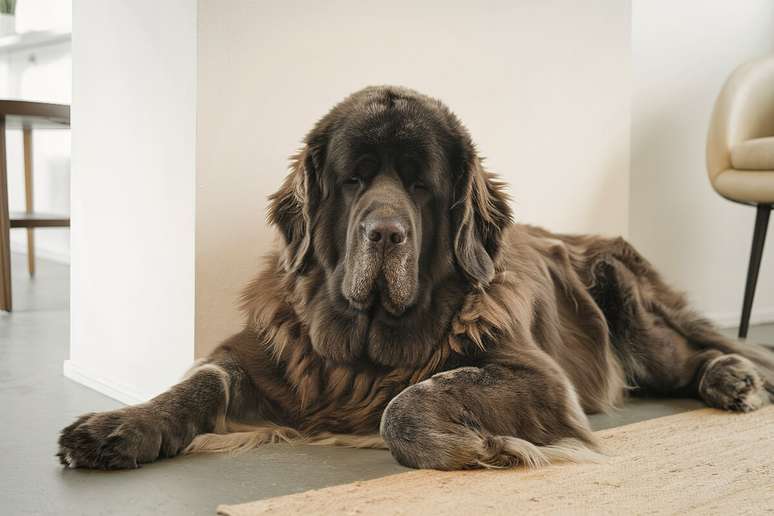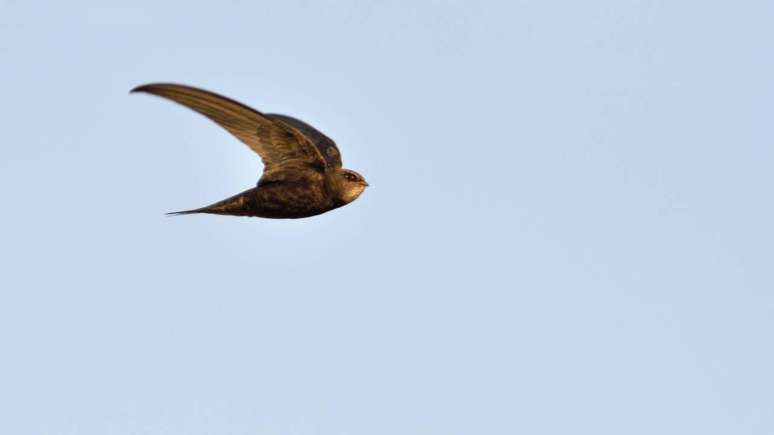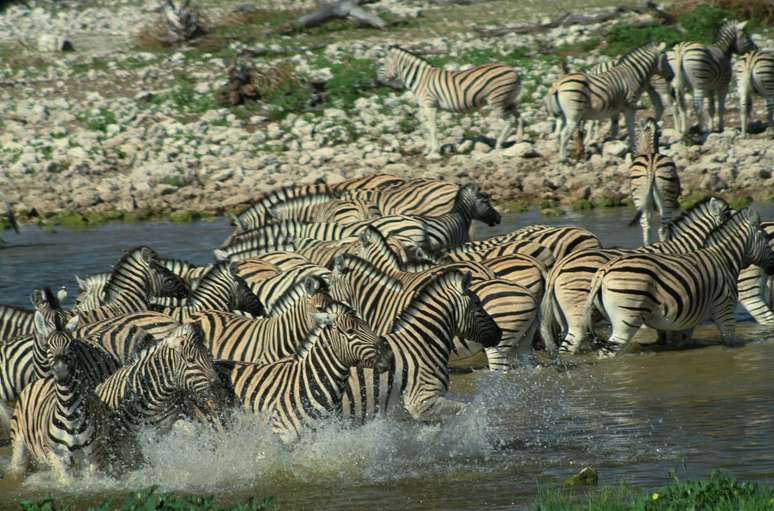Known as the “gentle giant,” this dog wins hearts with his strength, intelligence and incredible swimming ability
Native to the Island of Newfoundland, Canada, the Newfoundland (or Newfoundlandin English) is a breed that combines physical size with a docile and reliable temperament. According to the Brazilian Canine Confederation (CBKC), it descends from local indigenous dogs crossed with the so-called “large black bear dog”, introduced by the Vikings after 1100.
With the arrival of European fishermen and the beginning of the colonization of the island in 1610, the breed developed on the basis of selective breeding, without losing its essential characteristics: strength, resistance to the cold and the sea, as well as notable abilities as a pack and water dog, also finding wide use in aquatic rescues.
Below, take a look at some of the surprising characteristics of the Newfoundland dog!
1. Physical appearance
Newfoundland is a large dogwith a massive, muscular and well-structured body. According to the official CBKC standard, adult males reach a height at the withers of approximately 71 cm and weigh on average 68 kg, while females measure 66 cm and weigh approximately 54 kg. Despite its size, its movements are coordinated and surprisingly light.
The coat is double and water-resistant, with straight, moderately long topcoat and a dense undercoat, especially in winter. This characteristic is essential for its historical function as a water dog. The legs have natural interdigital membranes that facilitate swimming. The tail acts as a rudder, contributing to stability when diving or crossing.
The colors accepted by the CBKC are: black (traditional colour), brown (chocolate to bronze) and white with black, the latter considered to be of historical value for the breed, with specific markings preferred in the standard.
Newfoundland eyes are relatively small, dark brown in black dogs and black with white, and may be a little lighter in brown dogs. The ears are small in proportion to the size of the head, triangular in shape with rounded tips.
2. Temperament and personality
Despite its impressive size, the Newfoundland is recognized for a exceptionally affable temperament. According to CBKC his expression should reflect “benevolence and sweetness”, being a happy, serene and reliable dog.
He is affectionate and very attached to his family, especially children, with whom he tends to have admirable patience, which is why he has earned the reputation of “nanny dog”. Its balanced behavior makes it ideal for family life, even in environments with other animals. He is rarely aggressive and is generally calm, as long as he has been well socialized since puppyhood.

3. Health care and nutrition
As a fast-growing, large-built breed, the Newfoundland requires specific care for its joints, heart and body weight. Conditions such as hip dysplasia (a common problem in large dogs) and dilated cardiomyopathy are frequent concerns.
Food must be controlled and balanced, with veterinary support, to avoid overweight, which can worsen locomotor problems and compromise health. quality of life. The diet must be rich in nutrients that promote bone and muscle development, especially in the first months of life.
Additionally, because they have thick fur, it is important to maintain a regular brushing routine, especially during shedding periods. Bathing also needs to be monitored so as not to compromise the skin’s natural oils.
4. Education and socialization
Despite being a naturally balanced dog, the Newfoundland benefits greatly from positive socialization and training from a young age. According to the CBKC guide, this breed is intelligent and learns easily, which makes training easier, especially when done with positive reinforcement and patience.
AND important to present itwhile still a puppy, to different people, sounds, environments and animals, so that he grows up safe and sociable. Although not a demanding breed, they need physical and mental stimulation to stay healthy: regular walks, swimming and interactive activities are recommended.
Source: Terra
Ben Stock is a lifestyle journalist and author at Gossipify. He writes about topics such as health, wellness, travel, food and home decor. He provides practical advice and inspiration to improve well-being, keeps readers up to date with latest lifestyle news and trends, known for his engaging writing style, in-depth analysis and unique perspectives.









